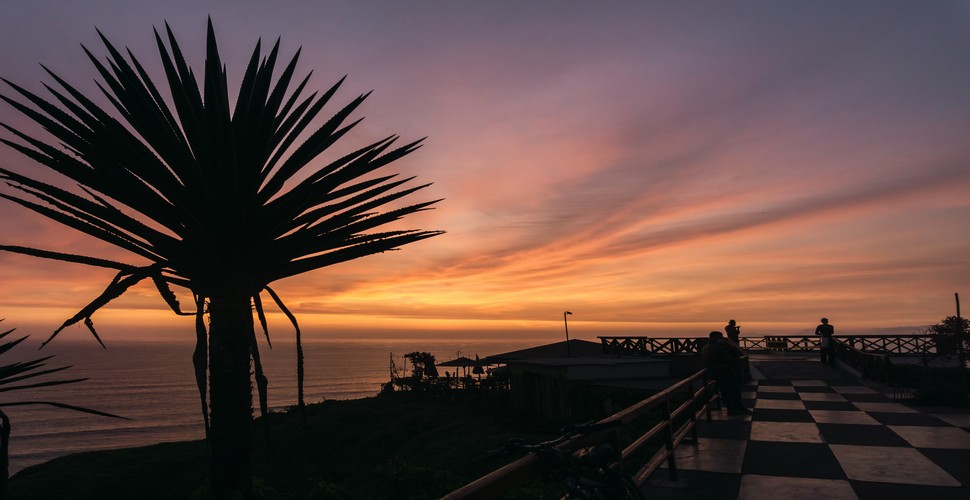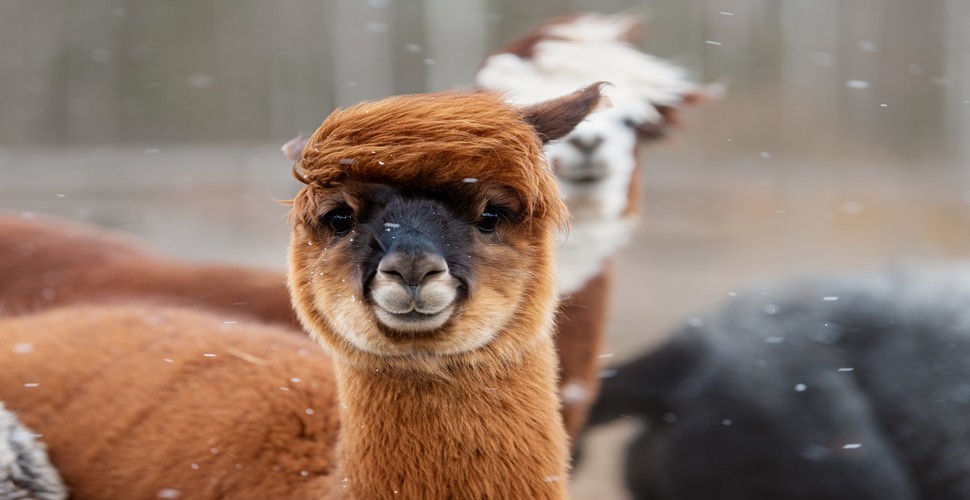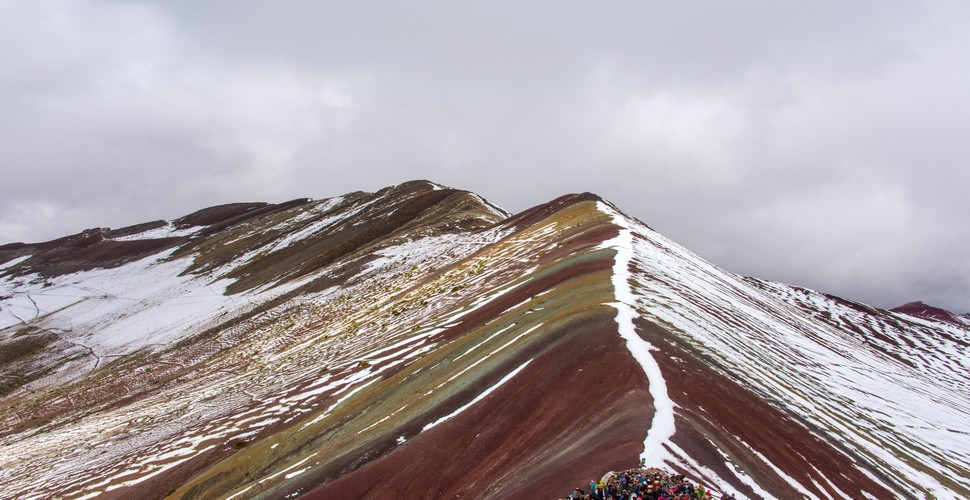

Claire Dean
Travel in South America is a joy to behold. The rich variety of destinations, experiences, landscapes and geography fascinated me so much, that I chose to relocate here, over 20 years ago! The best thing I ever did! Allow me to share my knowledge and passion for Central and South America with you and help you plan your holiday of a lifetime!

What Seasons does Peru Have?
Written by:Claire Dean
Last Update: 2025-02-01
The only thing predictable about Peru's weather is its unpredictability. It's not uncommon to experience all four seasons in a single day! For a vast country like Peru, predicting the weather isn’t as simple as following seasons. From mountains to deserts and beaches to jungles, Peru holds highly diverse geographies, each with their own distinct climate. To break it down, the country has three main climate regions: the coast, the rainforest, and the mountains.
Knowing when to plan your Peruvian vacation can be tricky, and you must consider several factors. Of course, the time of year and weather conditions are some of the most important aspects when booking a trip to Peru. For example, the coast is extremely hot and sunny between December and March, especially in the north. It’s cooler, with a hazy mist between April and November. In the Andes, however, December to March is the rainy season, and it’s more or less dry from June to September. It’s similar in the Amazon Basin, although more rain and downpours are heavier, and it’s hot year-round.
Generally speaking, Peru has two seasons, wet and dry, but altitude, and local weather patterns vary greatly throughout the different regions of Peru. Peru´s location just south of the equator, means a temperate climate all year round, however, The Andes have their very own weather patterns and seasons, so when we talk about the weather, we need to break down the 3 distinctive regions of the country. Here is some more information about the best time of year to go to Peru and the country’s seasons.
Sacred Valley in Dry Season
Weather in Peru
It’s worth looking at the weather patterns to assess when to visit Peru; the climate varies according to visit Peru; the temperature according to different geographical regions and the altitude. Each area has a diverse, varied climate and environment, from the coast to the Amazon basin to the Andes. Whereas the summer months in the Northern Hemisphere are from June to August, the height of the summer along the desert coast more or less fits the expected image of the Southern Hemisphere. That’s to say, it’s extremely hot and sunny between December and March, especially in the north, cooler and with a frequent hazy mist, known as garua, between April and November. That said, it’s only in the polluted environs of Lima that the coastal winter ever gets cold enough to require a sweater.
The Coast
The coastal region known as la costa, has a dry hot climate all year round, with temperatures reaching 45 C (110 F) from December through April, so it's perfect for soaking up some sunshine and sipping on a local beer or Pisco Sour. Temperatures are milder and more humid throughout the winter months of May through October. During this time of year, much of the coast, especially Lima, is covered in a misty, fog called “garua”, which keeps the temperature low. The weather on the Peruvian coast is very different from the Andes. In the coastal areas, we find a sub-tropical climate with high humidity and very little rainfall. The warmest months on the Peruvian coast are January and February. Peruvian summer on the coast is characterized by hot, humid, and sunny conditions, with occasional afternoon and nocturnal rain showers.
Huanchaco, North Peruvian Coast
Lima
Lima is at its most pleasant between December and March (temperatures around 24˚–27˚C). From June to September, a low mist descends over the valley where the city sits, although temperatures are still between 15˚-20˚C in June and 15-19˚C in September. Swimming is possible all year round, though the water itself (thanks to the Humboldt Current) is cool-to-cold all -year-round, meaning that to swim or surf for any length of time, you’d need to wear a wetsuit. Apart from the occasional shower over Lima it hardly ever rains. The freak exception, every few years, is when the shift in ocean currents of El Niño causes torrential downpours, devastating crops, roads and communities all down the coast. Trujillo and further north experience better coastal weather than Lima or the south. It's warm and dry; without the fog you get around Lima or the intense heat of the northern deserts.
Sunny Paracas Beach
The Andes
Further inland in the highlands of The Andes, the Andean region (la Sierra) has more or less cold temperatures depending on the altitude. There are two distinctive seasons: wet and dry. The dry season is between April and October, but even the mountains' wet season isn't always really wet and the dry season sees its share of downpours. Temperatures during the day in the dry season can get hot as 20°C-25°C, (68°F to 77°F). At night, temperatures can drop quickly and a warm sweater or fleece is essential, particularly in June and July.
Expect heavy rains from December to March, with January and February being the months with the worst rainfall. Between 18°C-20°C (64°F and 68°F) during the day, and 15°C (59°F) at night, the weather is a little more bearable at this time. On days with a higher concentration of passing rain clouds, the mornings are generally dry. This is something to bear in mind if you are visiting Cusco, Machu Picchu, Arequipa, or Puno.
Salkantay Mountain in Winter (Dry Season)
The Jungle
The eastern area of Peru is covered by the Peruvian section of the Amazon rainforest. It has a hot and humid climate throughout the year, but humidity and rain increase from December through March. Peru Amazon experiences include rain, heat, and more rain and heat! The average daytime temperature is 30-32° C (85-90° F), while nights can cool down to 20° C (68° F). They do have a wet and wetter season with the ”dry” season corresponding with the dry season in the highlands. In the region around the Manu National Park and Tambopata Reserve of Peru, there are two seasons: the dry season during the months of May – September, and the wet season from October – April. Be aware of the fact that there are more mosquitos in the wetter months of the year, so hikes and explorations of the rainforest are better done in the dry season.
Peruvian Amazon
Which are the best months to visit Peru?
It’s challenging to choose the best month to visit Peru because of the change in the weather across the different regions. January is the best month for a trip to the coast for fantastic weather, while May to September is the ideal period for visiting the Andes, Machu Picchu and the Amazon when it’s driest. Since you’re unlikely to find the best time to visit all areas on a single trip, there's little point in worrying about it. The country’s attractions are broad enough to override the need for guarantees of good weather.
Bright Winter Morning in The Andes
What is the Weather Like in Peru?
As we have mentioned, there are three distinct regions in Peru and each region has its own distinct climate, which makes it difficult to define the absolute best time to visit Peru if you’re traveling all over the country. Instead of having a Spring, Summer, Autumn, and Winter, Peru simply has wet and dry, when it comes to seasons.
Rainy Season in Peru
The rainy season runs from November to March and is exclusively in The Amazon Rainforest and The Andes. The coast enjoys dry, hot weather and it is the height of Summer. In the highlands, the rolling scorched hilltops become green with the heavy rainfall, and flowers come into bloom, however, trekking conditions are muddy and certain routes are prone to landslides, for example, Choquequirao and The lower regions of The Salkantay Trek. The very high regions of Peru can also result in heavy snowfall, fog, and misty conditions. Don´t be surprised to find Rainbow Mountain under a blanket of snow, for example! The roads to The Amazon are generally unpassable and washed out, and animals take cover from the heavy rains. So it's best to avoid the jungle from December to March.
Rainy Season Orchid At Machu Picchu
Dry Season in Peru
The dry season runs from April to October, which just happens to fall during winter in Peru. This is a wonderful time to visit, with warm sunny days and fresh cold nights, especially at high elevations. Temperatures often drop below zero in places like Cusco, Lake Titicaca, and Colca Canyon. This time of the year is also peak season, as it coincides with summer holidays in the Northern Hemisphere, so book well in advance to ensure the availability of tours.
Shoulder Season
If you want to avoid the large queues and crowds of other eager sightseeing tourists and enjoy reasonable weather, then visit during the "shoulder seasons" in April, May, September, or October, as these months fall right before and after the rainy season. Conditions are better with a temperate climate and the tourist crowds have yet to arrive. Prices are generally reasonable too!
Peru really can be visited all year round, with every season offering a unique experience of its own. The rainy season may be the wettest, but it’s also the warmest time of the year, with showers often only lasting a few hours. The coast is the best region to visit during this time. Traveling in the low season also means fewer crowds and queues of tourists; more stunning, greener scenery; and lower-cost flights and accommodation. The dry season is better for visiting the highlands where most of Peru´s attractions are based, as well as the Amazon Rainforest. The coastal region is, however, a lot colder, being winter, so if you are searching for the sun on the coast, head North to Mancora, Punta Sal, and the numerous beautiful beaches of Piura. The weather will naturally impact your trip in some way. But fog, rain, sun, or blue skies, in a country like Peru, the landscape, nature, history, culture, and people always remain beautifully fascinating.
Rainy Amazon Jungle
When is the best Time to Visit Peru?
Depending on the activities you want to do, Peru has plenty to do all year round. If you enjoy trekking, then from June to September is ideal. Remember to book the Inca Trail way in advance as permits sell out almost a year in advance! Other treks are a better option if you are traveling last minute. June also sees Peru´s biggest festivals such as Inti Raymi, Qollor Riti, and Corpus Cristi in Cusco. July is "Fiestas Patrias" or Independence Day in Peru. Traditional religious festivals, such as Christmas, New Year, and Easter also see a fiesta around every corner of Peru! February is Virgen de La Candelaria, one of the biggest folklore festivals in the country. A recommendation is that if you plan to travel in high season or winter, then make sure you book way ahead of time as hotels, Inca Trail, flights and are booked up. If you are traveling in Summer, we recommend that you still to the coast, with warm sunny days, wine festivals, great surf, and a generally relaxed chilled vibe. Popular Northern beach towns get booked up and prices rise during this time, however.
* Our top tip? Visit during the shoulder seasons when the weather is usually fine, there are not too many people, things are not booked out, and most regions have some excellent activities going on!
Llama Bad Hair Day!
A Month By Month Summary
Visiting Peru in December - February
Winter in the Northern Hemisphere tends to be the Southern Hemisphere’s summertime, and vice versa. So, if you are looking for the best time of year to visit Peru and you are heading for the coast, December through March is the hottest time to travel, and there’s very little rain. Conditions on the coast are ideal for swimming and beach activities.
In the Andes and the Amazon Basin, these warm summer months are the rainy season (December to March). Temperatures are warmer; however, the rains make it feel just as cold as in winter. Local people don´t usually refer to summer or winter as just ‘wet’ and ‘dry’ seasons. With this in mind, the wet season in the Amazon is hot, humid and wet. December to February can be the best time of year to visit Peru if you are traveling to the coastal regions, especially in the north. You can expect temperatures to be hot and sunny at around a pleasant 29˚C. There will be very little rainfall in coastal regions. During the December to February period, you can expect the rainy season in the Amazon Basin and the Andes. Water levels are high at this time, and flora and fauna are abundant. At this time of year, the Inca Trail is closed during February due to possible landslides and maintenance. Machu Picchu itself remains open during this period.
Lima January Sunset
Visiting Peru in March-May
For those coming from the Northern Hemisphere, spring is considered to be roughly from March to May. From March, we are heading into Autumn, and the temperatures on the coast begin to get milder. It’s still wet within the Andes, but you will find that it’s quieter with fewer crowds on the trails. The rainforest is still hot and humid – as it is all year. It is still hot in the coastal areas from March to May, but temperatures are beginning to drop. March is the end of the rainy season in Machu Picchu, and you can expect the area to be drier and warmer by May. You may find this period quieter, and getting a permit for trekking the Inca trail is more accessible. It's the rainy season in the jungle at this time of year, but the vegetation is lush.
Machu Picchu Rainbow in March
Visiting Peru in June - August
Winter in the Southern Hemisphere is generally considered the best time to visit. Dry conditions and warm weather make this an ideal time to visit Peru. Cusco is at its best, and you can make the most of the Andes’ fantastic trekking opportunities. It is cold though when the sun goes down, so take extra layers. The Amazon is hot all year but at its driest during the May to September period. June to August is the peak time to visit Machu Picchu, so it’s hectic. There is less rain in the Andes at this time of year, and it’s an excellent time to travel for those who want to go trekking or climbing. You’ll get some incredible views of the mountain peaks and clear blue skies. Temperatures are much milder on the coast – at around 18˚-22˚C– than between December and March. Lima is also shrouded in grey mist at this time of the year. The coolest temperatures occur from June to October (lows of 15˚C and highs of 19˚-20˚C). In the Amazon, temperatures are hot and humid, but this is the dry season, so there will be less rainfall and lower water levels.
Windy Winter Day in The Andes
Visiting Peru in September - November
Early spring (September and October in the Northern Hemisphere) is a good time to visit Cusco, Machu Picchu, and the rainforest. It rarely rains in Cusco and around Machu Picchu during September and October, so it’s an ideal time to visit weather-wise. But remember that good weather brings more visitors, and trails will be at their busiest. For those who want to travel to the coast, the temperatures are much cooler at this time of year but still a pleasant 23˚-25˚C. The rainforest is hot with less rainfall than from November to February, making it an excellent time to visit and discover wildlife, flora and fauna. It’s also an ideal time to see Colca Canyon and Arequipa. From September to November, the temperature in Lima and Trujillo is cooler.
Arequipa Sunset
When is the best time to visit Machu Picchu?
Machu Picchu is an unmissable highlight of any trip to Peru. In high season, the entire Sacred Valley swarms with visitors from June to SeptemberSacred Valley swarms with visitors, and it might be challenging to avoid the crowds. The Inca trail is closed in February, usually the wettest month. It closes for annual maintenance and repair, although Machu Picchu is still open. If you plan to go in the high season, you must book several months ahead as the trail is so popular. The area is quieter from October to April, but it’s wetter. The month of May is quite a good choice as it’s the end of the rainy season, and the sky will be bright and clear with excellent views. Several alternative ancient sites in Peru are Peru well worth visiting, which tend to be less busy than Machu Picchu.
Sunny Machu Picchu
Conclusion
In conclusion, the best months to visit Peru, assuming you want to visit Machu Picchu and the Andean region of Cusco, is in winter from May to September, which coincides nicely with the holidays in The US and Europe. However, this is not the best time for the coastal region, with somewhat lower temperatures and no sunshine. The good news is that Peru has special activities all year round, and if it is cold and grey in one part of the country, another part will be experiencing glorious weather!
Snowy Rainbow Mountain
So, now you know you know a little more about the seasons in Peru and what to expect on your South American visit! Peru is a country that has something for everyone and depending on your interests, you can enjoy your vacation wherever you may be in the country! We have covered optimum times for certain activities and weather conditions in the different regions of Peru. If you have any questions about the seasons, the best time to visit, the weather conditions, in fact anything! ... contact us here!




















